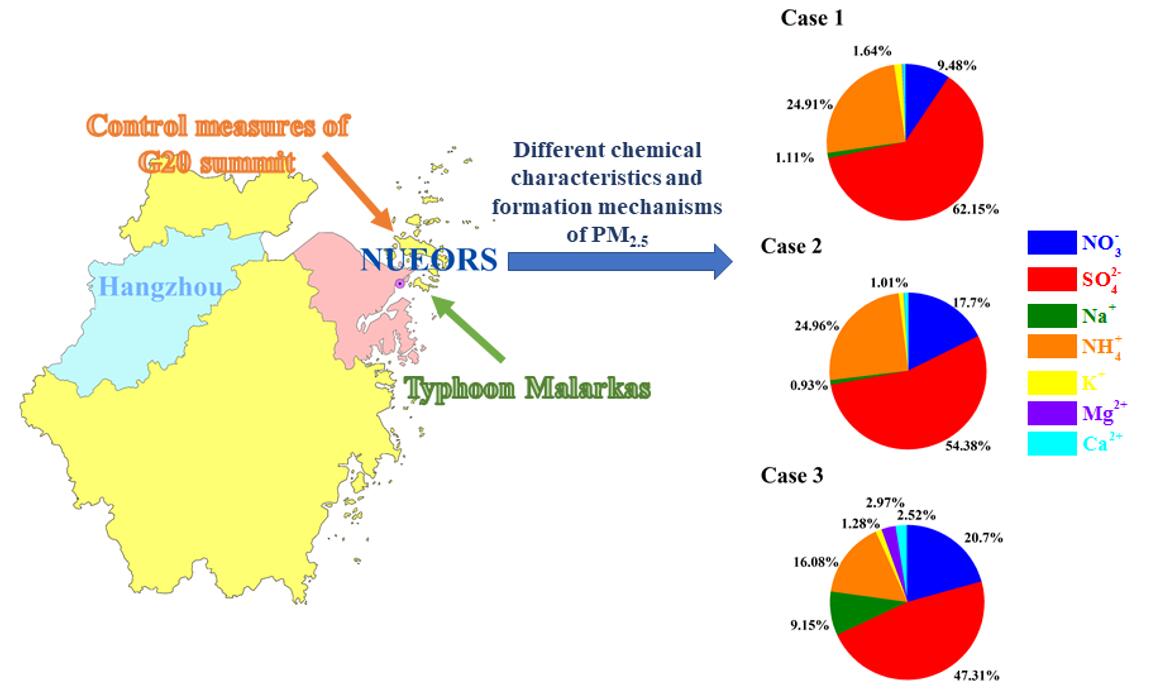
Recently, the team of Atmospheric Environment led by Professor CHEN Jinsheng from the Institute of Urban Environment, Chinese Academy of Sciences (IUE, CAS) has found the different impacts of artificial control and natural intervention on the formation mechanism of fine particles (PM2.5) in atmosphere.
Under the emission control of the major events and the typhoon weather, PM2.5 had presented different chemical characteristics and formation mechanisms.
To improve air quality, control measures were adopted by the government in the Yangtze River Delta (YRD) region of China after 2016 G20 summit. It was determined that typhoon Malarks had a significant influence on the YRD region, especially the coastal cities in the YRD region. Therefore, the strict control measures and typhoon occurred within a short period (September 2016) offer a valuable opportunity to study the difference in the formation mechanism of PM2.5.
Researchers conducted the study in the city of Ningbo. Three distinct cases, i.e., a control case, a normal case, and a typhoon case, were investigated during the study period.
The results showed that stable weather condition and the regional transport from inland regions could still result in high concentration of PM2.5 even the strict emission control was implemented in the control case. The stagnant atmosphere with high relative humidity (RH) was beneficial for the transformation of SO2 to SO42- and finally resulted in high proportion of SO42- in the control case.
The control and typhoon cases both resulted in extremely low NO2, but the contribution of NO3- to PM2.5 was decreased in the control case and increased in the typhoon case. The close correlation of the nitrate oxidation ratio (NOR) with Na+ and Mg2+ in the typhoon case was indicative of sea salt associated with the typhoon that provided a surface for the heterogeneous formation of NO3- .
The results mentioned above have been published in Atmospheric Environment and titled "Impact of control measures and typhoon weather on characteristics and formation of PM2.5 during the 2016 G20 summit in China".
This study was funded by the National Key Research and Development Program, the National Natural Science Foundation of China, the Chinese Academy of Sciences Interdisciplinary Innovation Team Project, and the Natural Science Foundation of Fujian Province, China.

The different chemical characteristics of PM2.5 in the cases under emission control (Case 1), normal state (Case 2), and typhoon weather (Case 3). (Image by IUE)

86-10-68597521 (day)
86-10-68597289 (night)

52 Sanlihe Rd., Xicheng District,
Beijing, China (100864)

